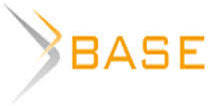РЕНТАБЕЛЬНОСТЬ КАК ФАКТОР ПОВЫШЕНИЯ ЭФФЕКТИВНОСТИ ДЕЯТЕЛЬНОСТИ ПРЕДПРИЯТИЯ
Aннотация
Анализ доходов, прибыли и рентабельности производственных предприятий всех форм собственности является составной частью анализа финансово-хозяйственной деятельности предприятий и одним из наиболее действенных инструментов учета и контроля уровня использования материальных, трудовых и денежных ресурсов в условиях рынка. Результаты данного анализа практически используются в планировании производства и оценке эффективности качества работы. Проведение анализа – одна из ключевых задач управления в экономической сфере. Содержание анализа доходов, прибыли и рентабельности производственных предприятий состоит в объективной оценке достигнутого уровня организации производства и выявлении резервов дальнейшего улучшения качественных и количественных показателей. Анализ призван охарактеризовать изменения в материально-технической базе производства и показателях его эффективности, обеспечить глубокое экономическое обоснование решений, через которые реализуются функции управления.
Ключевые слова: рентабельность, прибыльность, доходность, экономическая эффективность, финансовый анализ, инвестиции, убыточность
К сожалению, текст статьи доступен только на Английском
Relevance of the problem. Profitability is a multi-valued economic category. The efficiency of the commercial considerations, pricing and other economic levers of management depends on the depth of its cognition and the rational use. Being a source of industrial and social development, profitability is a leader in providing of self-financing of the enterprises and associations, the possibilities of which depend largely on what extent the revenues exceed the costs.
The question of profit and profitability are particularly critical for many businesses, since a lingering economic crisis, the components of which are high taxes and non-payments significantly devalue the profits obtained. Besides, having appeared in the economic conditions of the free economic swimming since the beginning of the reforms, enterprises can no longer rely on the state support, they are increasingly operating in the conditions of self-sufficiency and self-financing.
As a result of the problems listed above, the analysis of profitability is becoming extremely important. Cost-benefit analysis allows identifying the main factors of its growth, the efficient use of resources, the potential of the enterprise.
Analysis of the latest scientific research. Many scientists economists such as A.S. Loban, A. S. Golovachov, V.V. Kovalev, A. D. Sheremet and others devoted their works to the study of the cost-effectiveness and profitability of the enterprise issues.
It is necessary to say that the works of these scientists are extremely important to understand the essence of the concepts of «profitability» and «cost-effectiveness».
The purpose of the work. To present a comparative description of the concepts of profitability and cost-effectiveness of modern enterprises in the market economy.
The main material of the study. Profitability (Ger. Rentabel – profitable, lucrative) is a relative index of economic efficiency. Profitability comprehensively reflects the degree of efficiency in the use of material, labor and financial, as well as natural resources. Profitability is generating profits, taking into account the resources used or spent. Net profit ratio is calculated as the ratio of profit to assets, resources or streams forming it. It can be expressed as the profit per unit of invested funds, and the profit which an each obtained monetary unit carries in itself. Profitability ratios are often expressed as a percentage [1].
Profitability is the ability of the enterprise (project) to make a profit. If the business has a positive net financial result from its activities (the difference between income and expenditure is greater than zero), it is profitable. Difference of profitability from the cost-effectiveness can be seen on the example of the decision making to invest in the project. If the decision-making criterion is cost-effectiveness, the investment project will be approved in the case that any profit, including the minimal one, is received. If the decision-making criterion is profitability, the project will be accepted only if it provides an acceptable level of return on the ex post investments.
Profit cannot be identified with cash. Profit has a virtual purchasing power. Demonstration of the large profits in the financial statements does not at all say that the firm has got additional opportunities for the immediate purchase of the values.
The literature on methods for assessing the profitability, we almost never meet the actual definition of this concept. What is profitability or cost-effectiveness? What should profitability ratios tell us about? And what do the users of the accounting information expect from the profitability ratios?
In the common usage, the word «profitable» means «justifying the expenditure, not unprofitable» [7]. This meaning of the concept of profitability is not far from its economic interpretation. For example, V. V. Kovalev, considering «economic efficiency» as one of the types of profitability ratios defines it as «a relative index, measuring the obtained effect with the costs or resources used to achieve this effect» [2]. In general, V.V. Kovalev notes, that profitability ratios are calculated as the «ratio of the income (profit) earned to the average value of resources used». Thus, the general interpretation of profitability ratios is as follows: it answers the question of how many copecks of profit a ruble of costs has brought.
A. D. Sheremet defines profitability as the «main performance efficiency indicator of the economic activity» [10]. He notes that the profitability ratios «are calculated as the relative indicators of the financial results got by the enterprise in the accounting period ». According to the definition of A. D. Sheremet «economic substance of the profitability ratios is restricted to the profitability of the enterprise’s activity». It should be noted that this idea is extremely important to understand the essence of the concept of «profitability». The definitions represented actually differentiate the terms «profit» and «cost-effectiveness». Here, the profit is a certain variable estimating the monetary valuation of the diminution between the revenues earned and the relative costs. Cost-effectiveness is an indicator showing the ratio of the profit obtained by a firm (that is, the above mentioned assessment) with the certain values numerically characterizing the factors of profit formation, «earning». These include assets, own sources of funds (owned capital), operating revenues and expenses. Profit is the absolute index, profitability is a relative one. Firms that have received the same profit may have absolutely different degrees of profitability. At the same time, profit of the firm can grow and profitability can decline from period to period.
In our opinion, the concept of «profitability» and «cost-effectiveness» cannot be identified. Profitability assesses the financial investments effectiveness degree in terms of the realized profit. While cost-effectiveness only states the fact of making a profit.
To evaluate the profitability they use special indicators – profitability ratios. These coefficients represent the ratio of a definite profit indicator to the matching this indicator base, which can be represented by different types of expenditure or revenue.
Management of profitability in view of its calculation is connected with the two factors:
1. Benefits management (the numerator of the profitability ratio).
2. Profit generation base management (the denominator of the profitability ratio).
Due to the fact that profit is the difference between income and expenditure, the benefits management is directly linked to the impact on factors of the financial and economic activities that contribute either to the revenues increment or costs reduce [5]. In case the insufficient level of profit is conditioned upon the high production costs, the reduction of expenditures, «lean production», reducing of the amount of taxes paid, resource-saving technologies, as well as the unprofitable production elimination or conservation can remedy the situation. If the reason for a small profit is insufficient sales revenue, the action should be aimed at increasing the revenues from the non-core activities, marketing management and pricing, assimilation of the new production release.
To increase the income, it is necessary to pay attention to the following areas of activity: sales dynamics analysis and planning, smooth production flow monitoring, production activities diversification, pricing policy effectiveness, sales value (capital-, capacity utilization, pricing, staffing) factor analysis, critical production volumes on the product type and so on [9]. The results of such analytical observations can be outprocessed in the form of tables where the planned and actual values of the production volumes and sales, as well as differences in physical and monetary terms, are indicated. These tables are the basis for the management decisions related to the profitability drivers mobilization. These decisions are the responsibility of the company’s top management, as well as the marketing services’. Financial services in this field are concerned with a reasonable pricing policy, assessment of the new sources of revenue’s expediency and economic efficiency and control of the existing and new industries’ profitability.
To reduce the costs it is necessary to carry out the assessment, analysis, planning and control of the scheduled tasks execution on the sites of origin and types of expenditure. Here a common thesis is appropriate: «Costs should never be left unattended, otherwise they tend to unjustified growth». Besides it is necessary to look for the reasonable reserves to reduce the production cost and manage the expenditures through the prism of the responsibility centers. Within one production cycle the cost management process can be represented as the following procedures:
1) planning – costs forecasting and planning (budgeting);
2) organization – costs rationing;
3) control – expenditures and cost value analysis; cost management control and regulation;
4) sales – cost accounting and cost value calculation.
Due to the fact that in profitability ratios calculating different bases (certain types of assets, funding sources) are used, the profitability management on the base of is closely connected to the structure of these assets and sources. For example, it is possible to the investment profitability by means of changing the capital structure, and the sales profitability can be affected by means of the production structure changing [6].
The following types of profitability are differentiated:
1. Product profitability – the ratio of net profit to total costs.
2. Permanent (fixed) assets profitability – the ratio of net profit to the value of fixed assets.
3. Staff profitability – the ratio of net income to the average number of staff.
4. Production profitability – the ratio of profit to the total value of fixed assets and floating assets.
5. Extra charges profitability – the ratio of production cost to its sell price.
6. Sales profitability – the ratio of sale profit to the operating revenues.
7. Basic earning power coefficient – the ratio of earnings before taxes and interest receivable to total assets.
8. Assets profitability – the ratio of operating profit for the period to the average size of the total assets.
9. Owned capital profitability – the ratio of the net profit for the period to the average amount of the owned capital.
10. Invested, permanent capital profitability – the ratio of the net operating income to the average owned and long-term borrowed capital for the period.
11. Net assets profitability – the ratio of the profit before taxation to the net assets.
Profits margin increase can be achieved by implementing the cost reduction, price increase for the products sold, as well as the exceeding of the growth rates of the products sold volume over the expenses growth rates. The costs can be reduced, for example, by means of the use of cheaper raw materials and supplies; automation of production in order to increase productivity of labor; reducing of the conventional and permanent costs, such as advertising costs, the research and development costs, management system improving costs. Products price rise can also serve as a means of the assets profitability increasing. However, in a developed market economy it is quite a challenge. Only companies having a pricing power can raise prices for their products and thus maintain the level of assets profitability even in the conditions of the deteriorating business environment.
The ways to increase the profitability of sales are necessary to analyze on the basis of the situation prevailing in the enterprise. If the growth rates of costs outpace the revenues growth rates, the reasons for this could be inflationary costs increases outpacing the revenues; prices decline; change the structure of the range of sales; increase of the cost standards, the emergence of competitors in the market, product demand reduce. To remedy the situation it is necessary to analyze the enterprise’s pricing issues, product line, existing system of the costs control.
The rates of the revenues drawdown usually outpace the rates of costs drawdown due to the reduction in sales volumes, and it is necessary to analyze the marketing policy.
Situation when the rates of costs drawdown outpace the rates of revenues drawdown is exteriorly attractive, but in this case only a formal improvement of the profitability index while reducing the revenue takes place. To draw the correct conclusion it is necessary to analyze the pricing and assortment policies of the company.
Any company is seeking to increase the revenue while reducing the costs. Usually the changes of the sales assortment, sales rates or increase of prices for products or services lead to this. If this is the company’s current state of things, then the further analysis should be aimed at assessing the sustainability of this state.
In order to achieve a situation when the revenues growth rates outpace the growth rates of costs, it is necessary to increase the sales volume or change the range of sales. The main elements of the cost value of production are the variable and fixed costs. Changing the cost structure may significantly affect the profit margin. Investment in the fixed assets is accompanied by the increase in fixed costs, and theoretically, in the reduction of the variable costs. However, the relationship is not linear, so to find the optimal combination of the fixed and variable costs is not easy. Alongside the simple price increase for the already existing range of products, the company can achieve the revenue growth due to the changes in the range of products sold.
One of the most common approaches to the identification of factors affecting the profitability is the well-known factor model of firm «DuPont», whose first technique became known in 1919. It should be noted, that the factor analysis model, proposed by the specialists of DuPont, remained unclaimed for quite a long time, and only recently it started to be paid attention to.
This model helps to identify the factors that determine the efficiency of the firm. As the main indicator of the company’s effectiveness the indicator of the return on equity (ROE - Return on Equity), which shows the return on shareholders’ investment in terms of accounting profit, has been selected by the experts [8]. Despite the simplicity, the method reflects three important components: the structure of the business risks, their dynamics and additional assessment of the capital cost.
Technique developed by «DuPont» includes three varieties of the factor model of the «ROE»:
- the binomial model – offers to use the return on assets and financial lever as the factors influencing the final value of the criterion;
- the trinomial model – sales profitability and asset turnover are added to the financial lever;
- the five-term model – takes into account the operating profit and percentage and tax burden besides the impact of the financial lever and asset turnover.
According to the trinomial model, the return on equity depends on three factors:
ROE = PM*AT*FL, where
PM – profit margin;
AT – asset turnover rate;
FL – financial leverage ratio.
Profit margin indicates how many kopecks of the net profit the company receives from each ruble of the revenue. Asset turnover rate shows, how many rubles of the revenue are generated by the enterprise from each ruble invested in its total assets. This factor gives an idea about the application efficiency of the enterprise’s assets.
The financial leverage shows how many asset rubles were created while using one ruble of the owned capital. It indirectly measures the financial risk related to financing. The greater the relative amount of the borrowed funds attracted by the enterprise, the greater the amount of the interest paid on it and the higher the financial leverage level. Consequently, this indicator also allows us to estimate how many times the gross profits of the company (from which the interest for the loans is paid) exceeds the taxable income [3].
It is interesting that the above factors summarize all aspects of the financial and economic activity of the enterprise. For example, the profit margin summarizes the profit and loss statement, the asset turnover summarizes the assets balance and the financial leverage summarizes the liabilities structure.
When analyzing the current values and the dynamics of these factors it is necessary to take into account the industry specificity of the company’s activity. The industry and the specific conditions of the financial and economic activity may determine what factors the company will bet on in the implementation of the measures to improve the return on equity.
The basic three-factor tough determined model of the firm «DuPont» can be expanded to the five-term model, if we consider such important for the firm’s activities description factors as operating profit and before tax profit. Then the model acquires the following form: return on equity is equal to the product of the tax burden and interest burden, the operating profit margin, the asset turnover and the leverage ratio [4].
The term «tax burden» is a word-for-word translation from English, but it would be more correct to explain its meaning by means of such definition as «a share of profit remaining after the tax». The tax burden shows what percentage of profit before tax will remain at the disposal of the company after tax. The higher this index is the better it is for the company. Thus, this factor has a direct impact on the target, that is, when its value grows, the ROE also increases.
Interest burden shows what proportion of the operating profit will remain at the disposal of the company after paying interest costs on the borrowed funds. The company top management and financial manager can control this factor at their own discretion. The translated term «interest burden» is better to define more meaningfully as «the proportion of operating profit remaining after the payment of the interest». This factor also has a direct impact on ROE.
Operating return on sales indicates how many kopecks of operating profit are accounted for every ruble of sales. Unlike the net profit margin, operating margin reflects the effectiveness of the primary (production and sales) activity of the enterprise, without regard to the costs and revenues from other spheres of economic activity. The growth of this indicator shows the effectiveness of the policy of the company management concerning the costs.
Thus, when carrying out the analysis of the return on equity, we can take into consideration the influence of such factors as the proportion of variable and fixed costs in the revenue. And their influence on the resulting indicator ROE, will be reverse, that is, the decrease of their values leads to the increase in the return on equity. The necessity for such additional decomposition may be justified in cases when the management also needs to monitor the impact of the technological aspects of production activities on the profit margins. Each of the above models is used for analytical monitoring of the profitability. Formally, this is done by constructing and regular updating of the tables. These models can be expanded further, and can be replotted depending on the purposes of the analytical monitoring, which are set by the company management.
The present work has been carried out within a framework of the State Task of the National Research University «BelSU», Project Code 315.

















Список литературы